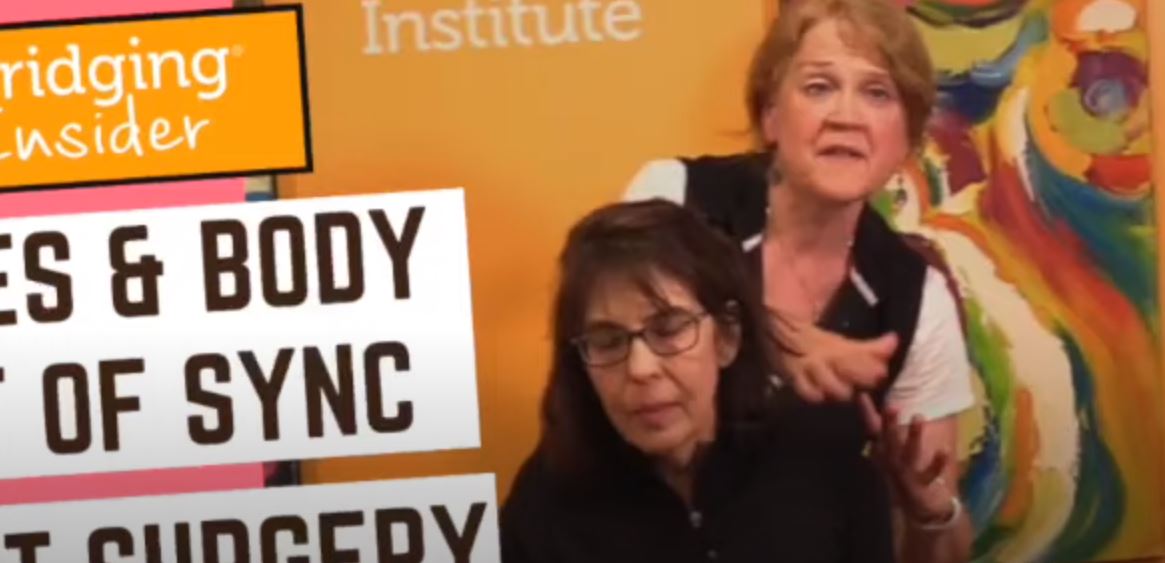Vision and Activity … Linked in Ways You Wouldn’t Think
The theme for this week … vision impacts our ability to be active
Often your pain, balance, or coordination concerns seem to be a mystery. Sometimes your vision is part of the puzzle. Read on …
Vision and movement
You likely take for granted how your vision affects your confidence and/or ability to be active. That is until a change affects you or a loved one.
Although the concept of poor vision impacting physical activity seems intuitive, the following study delves into how physical activity can be impacted given common conditions.
Interestingly, they note that causal relationships may be bidirectional — low activity may impact visual skills.
Physical activity, visual impairment and eye disease
The vision culprits that impact your activity are what you would suspect:
- AMD (age-related macular degeneration)
- Glaucoma
- Cataracts
- Retinal diseases (yes, this is why you get the retinal scan at your periodic check-up!)
Vision impacting activity or development starts in childhood
The relationship between vision and physical activity is not just related to aging. Vision plays a key role in a child’s early development of skills, both motor and social-emotional.
The following study nicely categorizes the ways in which low vision impacts children at various ages.
Comprehending the impact of low vision on the lives of children and adolescents: a qualitative approach
Although Bridging does not directly change vision, it does enable coordination with respect to vision. A key component of micromovement integration is how movement coordinates with visual-vestibular function.
At the end of the day, all three systems — motor, visual, vestibular — have to work together for you to feel confident and secure!
You will see this in the featured video with Sarena.
Insight of the week from Cara
How well do we move when we don’t accurately see where we are?
The vision and activity issue is a bit personal to me. I do not have depth perception and it impacts my choice of activity, as well as my propensity to get injured.
Ball sports are not my jam; I prefer less visually demanding running and hiking (where hiking sticks help guide me).
Yes, I’ve worked on it with my team, and the changes from Bridging® are some of the reasons we have insights into this issue.
- Is my actual vision better? No.
- Does my vision coordinate with my movement and balance better? Yes!
There are four common scenarios where we find vision and movement to have room for improvement:
- Post-injury: Head and body relationships are jumbled up. Especially after sports and auto accidents.
- Post-surgery: Breathing tubes and head position can alter your head-body relationship, leaving you feeling clumsy and off-kilter.
- Post-cataract repair: Your body suddenly has new visual acuity that doesn’t match years of pre-programmed movement relationships. Sometimes you need help adapting.
- Birth Challenges: Long or difficult labor often compresses or stresses fragile neck muscles leaving head and body off-center from each other. This impacts subsequent development.
As you will see with Sarena in this week’s video, the Bridging® problem-solving process is able to sort out glitches in her visual-motor skills, and then reset the underlying relationships.
Have you had visual stress or a balance challenge, and curious if we can help?
Stories from our sessions … Resetting vision and motor skills
“I had to drive a different car and was very worried … Surprisingly, it wasn’t an issue, and I felt more in control.”
Sarena, a week after the session
What happened to Sarena?
Micromovement disrupters
What’s happened to Sarena and when?
- Birth/Early life: Forceps delivery, hip dysplasia, had leg braces for a period of time
- Injury/Accident: Rear-end auto accident (age 45)
- Medical procedures/surgeries: surgery (age 57)
- Illness: digestive (age 29)
Sorting out the events that impacted visual-motor ease
Goal: Reduce daily stress and recover her sense of balance in order to be more active.
Perplexed and frustrated would describe Sarena and her desire to be more active. She has had visual disorientation since a surgery years ago, tried many avenues for help, but was left with few answers.
As you will see, there are two parts to finding new answers and help for her.
- Comprehensive View: Looking at the movement disrupters in her entire background we found that a prior surgery and awful auto accident play key roles.
- Unique consideration of the integration of vision and motor skills, and how they specifically can be disrupted.
By the end of the Bridging® session, tension has melted from her face, and her movement is so much more fluent.

